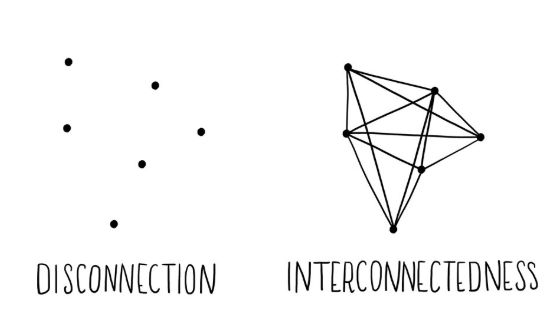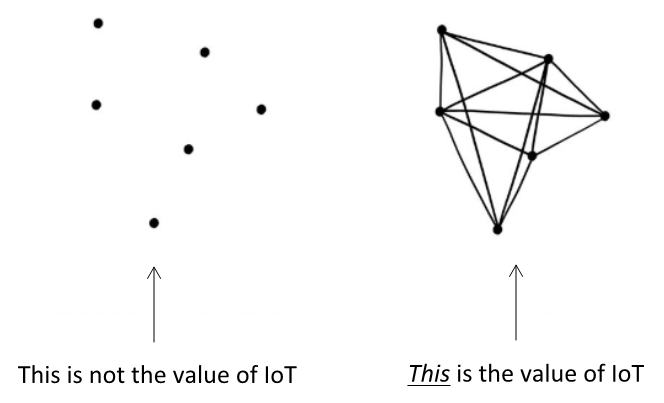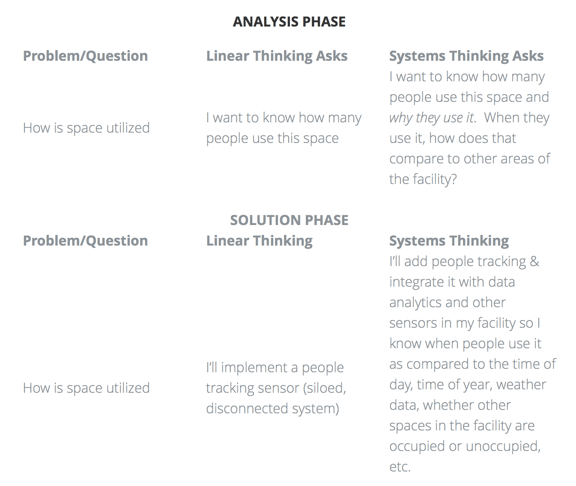What does it take to create a smart building? This question kicks off every meeting I have on smart buildings. Most expect an answer that involves an innovative technology stack and the move toward more autonomous, self-sustaining built environments. While true, what many owners do not expect to hear is that to create a smart building, you have to change the way you think as much as it requires you to change the technology used in your facility.
As our facilities have grown more complex, the emphasis is still on problem-solving. For facilities, engineering, and property management teams charged with the difficult task of keeping systems operational, reducing costs, maintaining occupant comfort, and much more, problem-solving is a necessary skill set. Although this skillset will always be vital, it does not serve us well in the creation of a smart building.
LINEAR THINKING
The challenge is that the problem-solving mindset is very linear. We view our built environments with a “cause and effect” mentality; we analyze root causes and identify solutions to fix them. When we do so by following the shortest, straight-line path from A to B (problem to resolution), we celebrate. This process supports the culture that governs how we design, build and operate facilities today, and it must evolve if we are going to create smarter buildings.
The culture of linear thinking has led to the biggest complaint we hear from customers today, “I have too many separate, disparate systems that do not communicate with one another.” This compliant is a byproduct of cause and effect problem-solving – identifying a problem in our facilities and seeking out a technology solution that can solve the problem. We create the silos of systems that owners are struggling to advance in their facilities today.
SYSTEMS THINKING
The goal of creating a smart building necessitates the evolution from linear thinking to systems thinking. In systems thinking, we seek out the perspective of the whole system by considering how each separate part is interrelated.

When people visualize a smart building, they visualize technology. Using the right types of technologies in your facility is crucial for success, but it is the interconnectedness of the technologies that unlock the value of a smart building, not the existence of the technologies alone.
The lack of connectedness has been exacerbated by the Internet of Things (IoT). It is not the presence of billions of network-connected things (devices) that provide value. It is how those things connect to and communicate with one another that makes IoT transformative. Just like in the image above:

Here is a simple example of a common problem: understanding how many people are using a given space in a facility.
ANALYSIS PHASE
Problem/Question Linear Thinking Asks Systems Thinking Asks
How is space utilized I want to know how many people use this space I want to know how many people use this space and why they use it. When they use it, how does that compare to other areas of the facility?

We are great at linear problem-solving in the built environment, and our methods have served us well for many years. As we move forward in the planning and design of a smart building, everyone involved must be willing to adopt systems thinking. The use of systems thinking will guarantee a successful smart building implementation based on the interrelationships between systems in the facility and the impact these systems have on each other, the environment, and occupants.